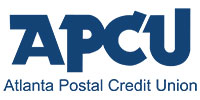 Do you know the difference between saving money and investing?
Do you know the difference between saving money and investing?
Many people understand the concept of saving money, but to explore the difference between saving money and investing, we will define saving money as income not spent, or deferred for later consumption. That includes money you put away for a rainy day (a rainy day fund) or saving money for unexpected expenses (emergency fund). There are several ways to save money including the most typical way, which is putting money in a deposit or savings account which is safer than stuffing it under your mattress. Some people will also save money for retirement in a pension or investment fund. But many people forget that saving money also involves reducing expenses and those pesky recurring costs. If you reduce expenses, your savings will grow and you will have extra money to help you earn more on your savings or you could use the extra money to invest.
Investments, on the other hand, are a bit harder to understand. In many cases, investing could be riskier than saving money in traditional deposit accounts depending on the type of investment. Some people equate investing with trading stocks on a more regular basis, but generally investing is associated with putting money away for a long period of time. While investing is riskier and your money is not guaranteed like saving money through traditional checking and savings accounts, investing can yield higher gains or earnings.
Here are a Few Highly Rated Investment Options:
●
High-yield Online Savings Accounts – These type of accounts pay more interest because there are fewer overhead costs to the financial institution. The advantage of these types of accounts, besides the higher interest rates, is that your savings are federally insured, so these are less risky and you can access your money as needed.
●
Certificates of Deposit – CDs also pay higher interest rates and are also federally insured, but these are time deposits, which mean you cannot withdraw your money for a specified period of time without accruing a penalty.
●
Money Market Accounts – These accounts pay higher interest rates and are also federally insured. These types of accounts are great for beginning investors, but note, inflation could affect earnings.
● Treasury Securities – T-bills are one of the safest investment tools because you purchase these for a set price over a set period of time. So for example, you could purchase a $1,000 T-bill for$900 for a one-year investment and you are guaranteed to earn $100 at the end of the year.
● Government Bond – This type of investment would be a good investment for a low risk investor, but the earnings fluctuate quite a bit based on interest rates and the longer the bond term, the riskier the investment.
● Short-Term Corporate Bond Funds – Sometimes businesses need to raise money so they issue corporate bonds to investors for a share of the company. These investments offer greater rewards, but they are risker because you could end up with a loss if the company encounters financial trouble or the company’s credit rating is downgraded.
These are just some of the
investment options that are available. The most important thing to remember with both saving money and investing is that the greater the reward (earnings) the greater the risk.
Before you decide how you plan to save money or do any type of investing, it is best to carefully research your options to ensure that you are getting the greatest return on your investment with the least amount of risk.
 Do you know the difference between saving money and investing?
Do you know the difference between saving money and investing? 








